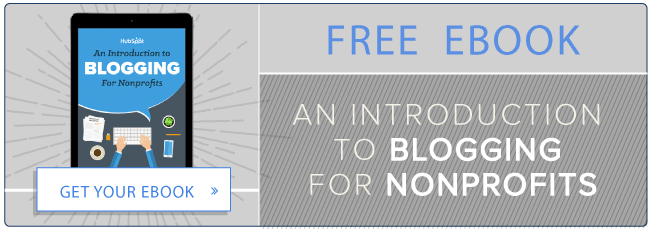
Not every marketing success comes from a big campaign. When you're a nonprofit operating under budget constraints, big campaigns aren't always even an option. Sometimes, it's the little tweaks that can yield a boost in results. In some cases, the tweaks correct an issue that's been holding your website back.
We're going to dive into three areas where you can make some quick changes that can kick off strong change.
1) Maximizing Your SEO Strategy
You have a clear SEO strategy based on your research of your prospects most pressing questions and concerns. You've identified what words and phrases they're using to search for information online. But is it being executed as completely as it could? Each page on your website and each blog post should be optimized around a single keyword or phrase that your ideal constituent is searching for on Google. More keywords than that can dilute the organic power of your main keyword.
If your organization isn't blogging yet, get going ASAP. A blog is the constant stream of fresh, SEO-focused content that search engines will use to drive traffic to your organization's online presence.
For a quick overview of blogging for nonprofits, check out this free ebook >>
Take a look at some pages and posts that aren't attracting as much traffic as anticipated. Review them to make sure they're focused on a current, high performing keyword. If they are focused on a single keyword, this is a good time to re-assess if that keyword should still be a part of your SEO strategy.
You can also optimize your high traffic pages and posts. Have you optimized each element on the page? Many people overlook optimizing their images for SEO. Look at everything from the image's filename to its alt text and title text to its loading time.
If you've seen an overall drop in organic traffic or your place in search results, it's probably time for a more comprehensive review of your keyword strategy.
- Have you done your SEO research based on what your prospects want to know, or only what you want to tell them? Inbound works because of an "educate first – ask later" approach.
- Perhaps your current keywords have gotten stale. Are they focused on what constituents and prospects are concerned about now? Prospects interests and pain points may have changed since you last created your keyword list.
2) Creating More Opportunities to Convert Visitors
Inbound marketing is a journey, just like the one your future constituents take. If your only calls-to-action (CTAs) on your website are calls to join, donate, or get involved – you're ignoring a lot of conversion opportunities.
Most of your website visitors aren't ready to make any sort of commitment to your organization just yet. That doesn't mean you can't get them into your database.
Pick one of your high-value, free resources and make it gated content. This could be a report on how use different credit union resources to rebuild poor credit or a 10-year outlook forecast on the direction of your cause.
Whatever the topic, it should be of sufficient interest and value to prospects that they'll happily give over their email address to get it. It's the starting point of an active relationship between your organization and a prospect that enables you both to learn more about each other, which ideally ends with the prospect joining your organization.
Placing CTAs to your gated content throughout your website and blog provides a low stress entry point for people who are still just looking for information and aren't quite yet ready to commit.
3) Treating Mobile as Mobile
Your mobile site can't just be smaller version of your primary website. Part real estate, part use case, the ways visitors interact with a mobile site are very different than a desktop site. Slightly more than half of all digital media is consumed via mobile, so optimizing your organization's mobile experience is critical to capturing and converting mobile traffic.
Let's start with real estate. Do use responsive design so your website design works on mobile screens. Since mobile visitors will see less with a first view than on your desktop site, make sure that first impression clearly communicates who your organization is and why the visitor wants to explore more.
When you visit your mobile site, do you see a lot of text? Consuming blocks of text is difficult and off-putting for mobile visitors. Break up monotonous text with bullets, color, or an image.
Your phone number should be click-to-call, for people who want to reach you immediately on their mobile device. Yet many people visiting your mobile site don't want to call you. They want information. So make sure your mobile CTAs reflect mobile usability — you’re your requests simple — ask only for an email address. A CTA to apply for membership or donate now should make it clear they'll get a link they can use to apply online that they can complete later from anywhere.
Last, Google constantly changes how it optimizes its mobile search results and user experience. Its latest approach is cracking down on annoying mobile pop-ups. If you have liberal use of pop-ups on your mobile site, or use big pop-ups that block out the content behind it, you'll want to get rid of them.
Staying Ahead of the Curve
It's easy to lose track of the little things when producing a lot of content, especially when the best practices of digital marketing change so quickly. Optimization is a never-ending process. But that just means you can always find ways to get some quick wins off your website when you're in-between running larger campaigns.
from HubSpot Marketing Blog http://blog.hubspot.com/marketing/3-quick-wins-to-improve-your-nonprofits-website
Via http://blog.hubspot.com/marketing/3-quick-wins-to-improve-your-nonprofits-website

No comments:
Post a Comment